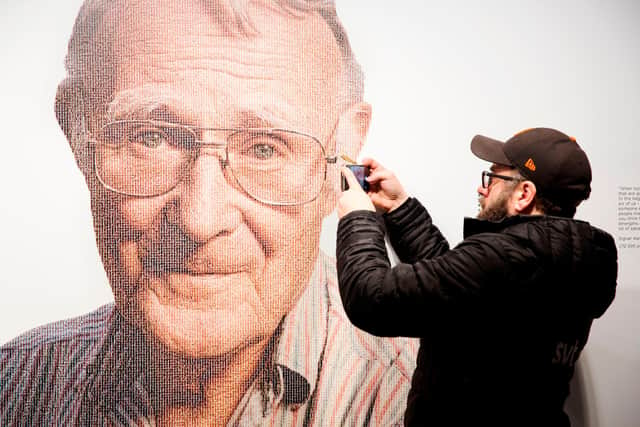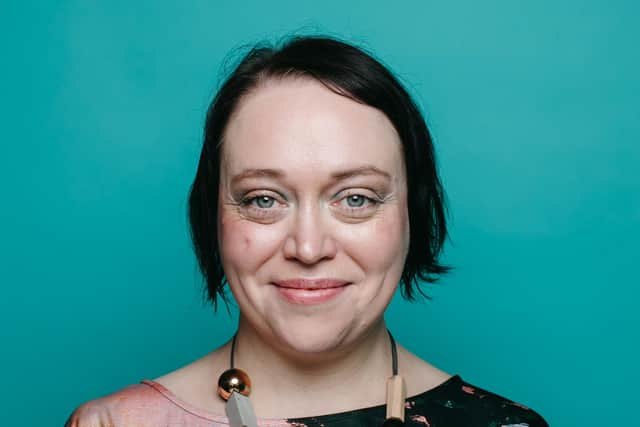How those with ADHD can be a real asset to business, with the right support - Angela Prentner-Smith comment
October may have been ADHD month, but the whole of the pandemic has surfaced ADHD for many individuals for the first time. Why? With the constraints and limitations on our lives, for a large number of people the condition became unmanageable, and many took their first-ever steps seeking help for issues that were there all along.
Living with ADHD during a pandemic is particularly challenging, and I am personally committed to raising awareness of what the condition really means, and why the world needs to challenge the stigmas associated with it.
Advertisement
Hide AdAdvertisement
Hide AdAt consultancy, training and technology business This is Milk, we believe in working towards inclusive workplaces. To us, this means celebrating uniqueness and fostering environments that allow everyone to flourish. I truly believe in accepting people’s struggles and shortcomings and allowing them to work to their strengths.


ADHD was always a hopelessly misunderstood condition, leading many people to miss diagnosis. This results in those affected living through their struggles, without available support – and in some cases never reaching their potential.
I know a host of adults who have only recently been diagnosed (driven by lockdown pressures), and who have suddenly come to understand the "why” behind the “what” of their lives. According to the ADHD Foundation, only 20 per cent of diagnosis is picked up through school.
ADHD is a bit like an iceberg: there is the material at the top that most people know about – the poor concentration and fidgeting. Underneath that surface layer are co-occurring conditions, behaviours, and pains. These include insomnia; poor working memory; sensory overload and low self-esteem.


Interestingly, thought-leadership in the area seems to be moving towards a view of neuro-divergence that sees the likes of autism, ADHD, dyslexia, and dyspraxia (among other diagnoses) as overlapping so much that perhaps they aren’t discrete conditions that can be looked at in isolation. Indeed, my recent literature reviews have told me that 50 per cent of people with dyspraxia also have autism and the same proportion have ADHD.
ADHD is one of the most researched "conditions” in the industry, with studies finding that ADHD brains are literally “wired differently”. Working with this understanding, there are various interventions that individuals can deploy to manage their lives differently.
Two of the things that I see most often with colleagues, friends and family who have ADHD are low self-esteem and anxiety. Both may be partially as a result of the condition itself and partially to the blows life has dealt them.
Challenges
Alongside these are the difficulties that come with living with ADHD in a world that doesn’t look favourably on the behaviours that come with it. With this experience, the questions I ask myself include, what can I do to improve the self-esteem of those around me? How can I support those who are feeling anxious?
Advertisement
Hide AdAdvertisement
Hide AdInclusive workplaces, and inclusive leadership, to my mind are less about identifying those who are "different” and adjusting for them (although that is a good start). It’s more about creating an environment where people feel comfortable to be themselves, can work in a way that suits them, and can play to their strengths.
Neurodivergent minds have acknowledged strengths. These include creativity, ingenuity and ability to work under pressure. In a world where we are facing huge challenges, where organisations require to be more adaptable and entrepreneurial, we need these qualities in abundance. Indeed, 60 per cent of self-made millionaires have ADHD. This may make you think that we need these unique brains as a normal part of society.
It may come as a surprise that various household names have overcome the societal and educational barriers put up against those who have ADHD and similar conditions. A theme emerges when we consider that Mel B of the Spice Girls; New Girl star Zooey Deschanel; and pop star Justin Timberlake all have ADHD/ADD. The predominance of the creative disciplines is very evident.
Evidence is strong in suggesting that people with ADHD are more likely to take risks. It’s part and parcel of the diagnosis – impulsivity. This impulsivity and the associated increase in risk-taking is part of the reason that unmanaged ADHD can take 21 years off your life expectancy (according to a great book titled ADHD 2.0).
Crucial
Living with ADHD without support increases your likelihood of suicide, death through accident, addiction and a host of other things. On the flip side, the condition also is crucial to entrepreneurship – a quality the world needs in abundance as we rebuild our society.
Ingvar Kamprad, the founder and CEO of Ikea, famously adapted the inner workings of his business empire to accommodate his ADHD and dyslexia. This demonstrates that not only can businesses adapt to be inclusive, they can do so while becoming a global empire.
However, on sharing a diagnosis or a sense of having ADHD, individuals can experience negativity as a result. This can come across as a sneer, or an eye roll, for example – a general sense that “it’s just an excuse for X or Y or Z”. Well, the professionals disagree. This is a real thing that’s massively under-diagnosed, and misunderstood.
With the right support and encouragement, though, people with the condition can bring strengths to a team and society at large. Everyone needs a chance to succeed, but that chance must be created by mutual understanding and cooperation. It cannot be given or taken. It must be created mutually.
Advertisement
Hide AdAdvertisement
Hide AdInterventions in your workplace – hiring policies, management practices, flexi-work and beyond can all increase the inclusiveness of your organisation. In return, you see the benefits of a diverse workforce, for the neuro-typical and atypical together.
These are all areas my team at This is Milk is ready to address. In 2022, we want to work together to turn talk into action.
Angela Prentner-Smith, founder and MD of This is Milk
A message from the Editor:
Thank you for reading this article. We're more reliant on your support than ever as the shift in consumer habits brought about by coronavirus impacts our advertisers.
If you haven't already, please consider supporting our trusted, fact-checked journalism by taking out a digital subscription.
Comments
Want to join the conversation? Please or to comment on this article.
